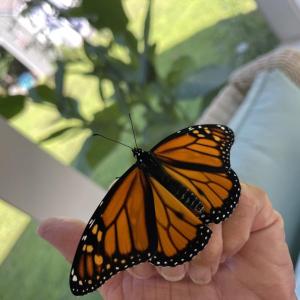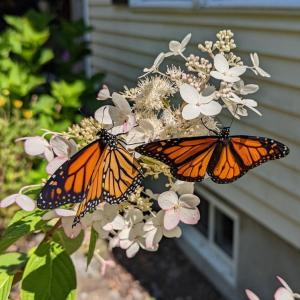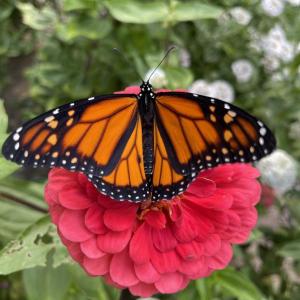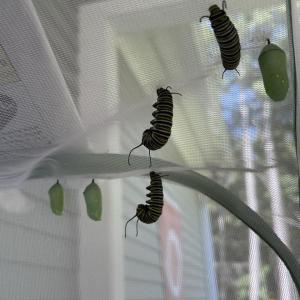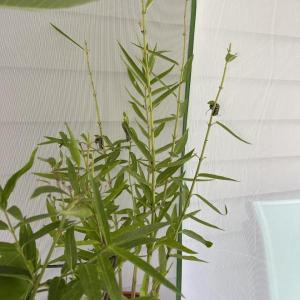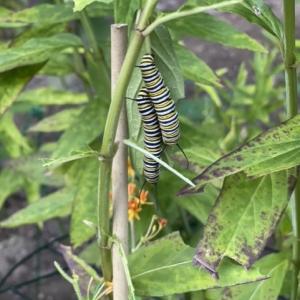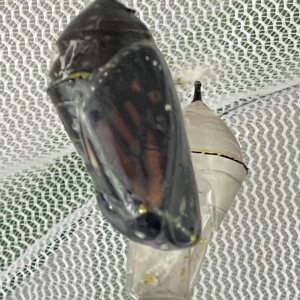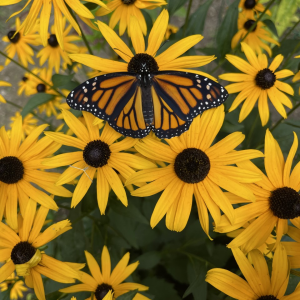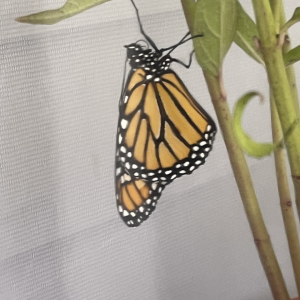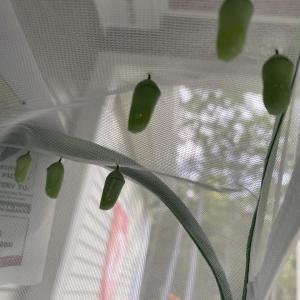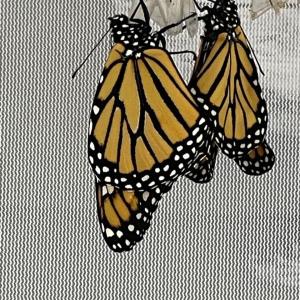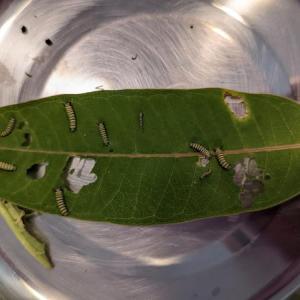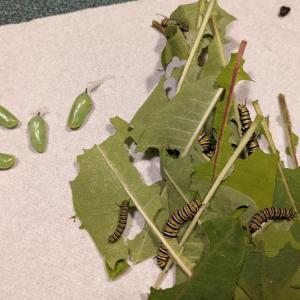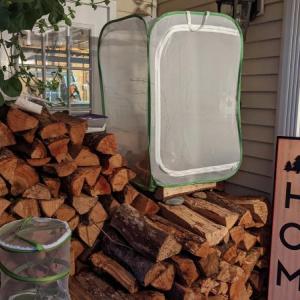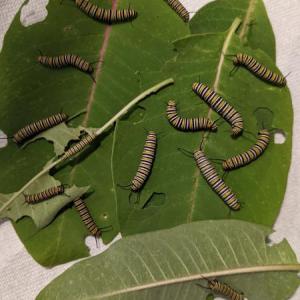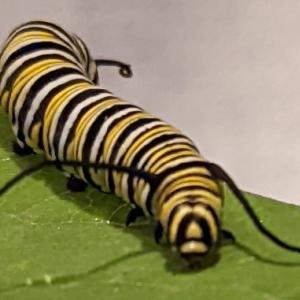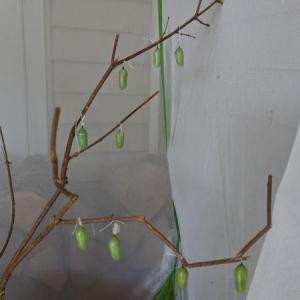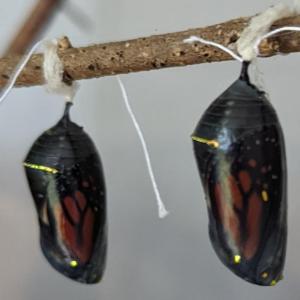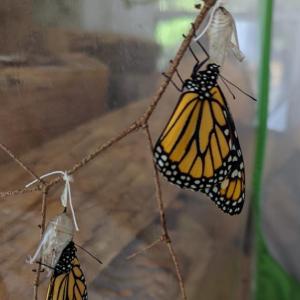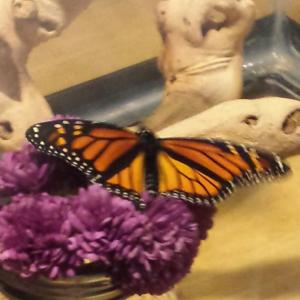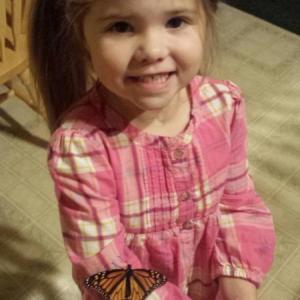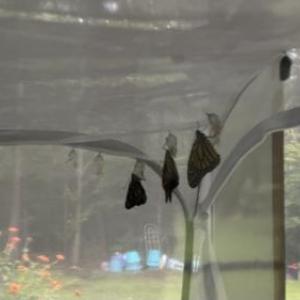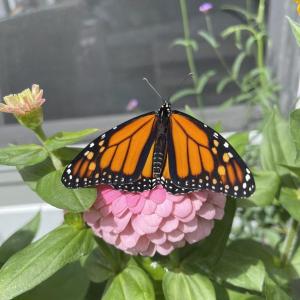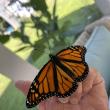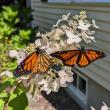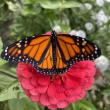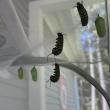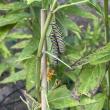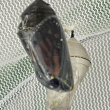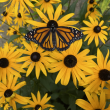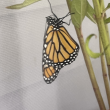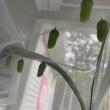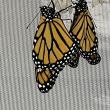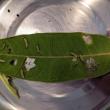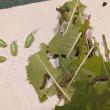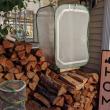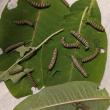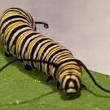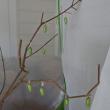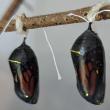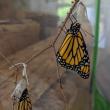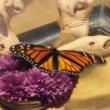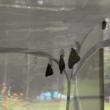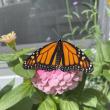Monarch mamas
 Monarch mamas Julie Roberts, left, and Sally Bullard. Courtesy of Julie Roberts
Monarch mamas Julie Roberts, left, and Sally Bullard. Courtesy of Julie Roberts
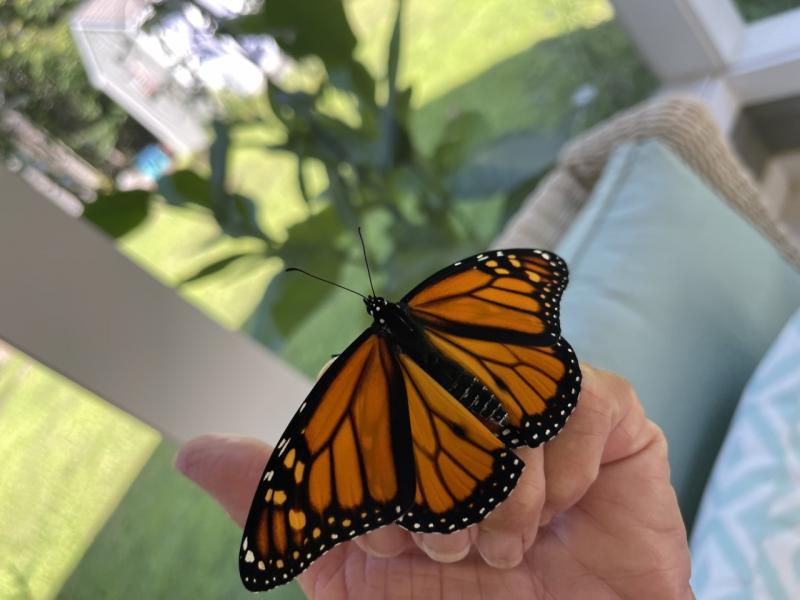 Male monarch born in Farmingdale under the care of Sally Bullard in 2022. Courtesy photo
Male monarch born in Farmingdale under the care of Sally Bullard in 2022. Courtesy photo
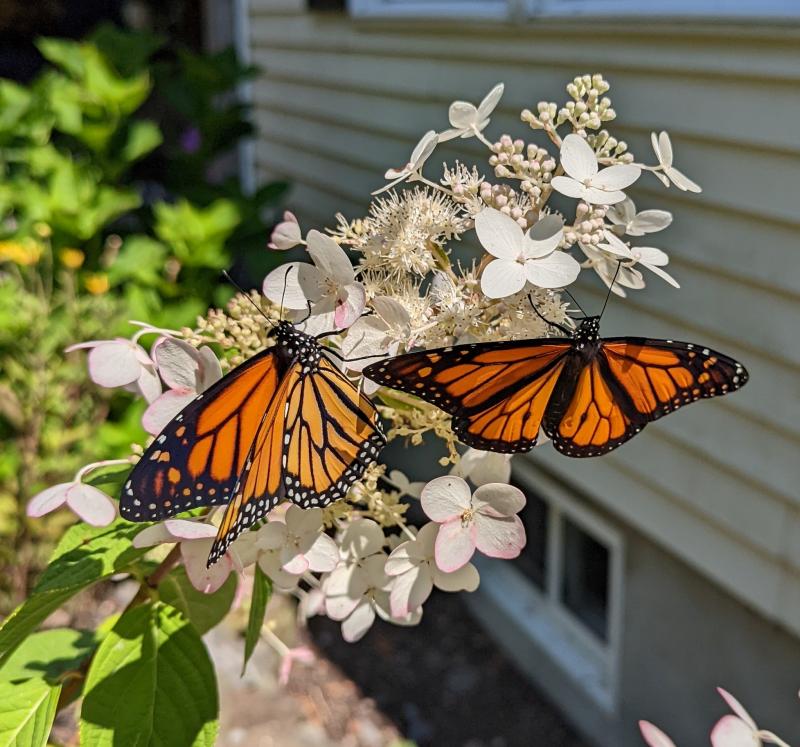 Baby monarchs freed into the yard of Julie and Paul Roberts and family. Julie Roberts photo
Baby monarchs freed into the yard of Julie and Paul Roberts and family. Julie Roberts photo
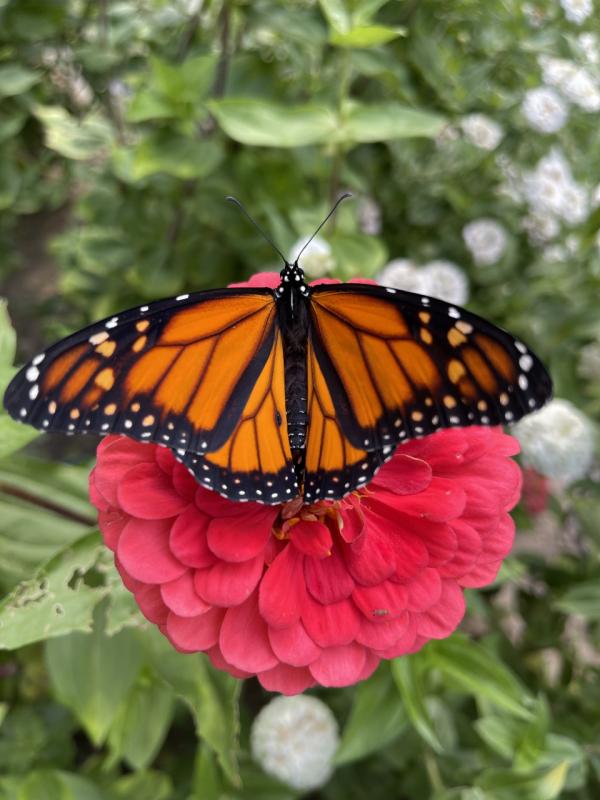 Sally Bullard photo
Sally Bullard photo
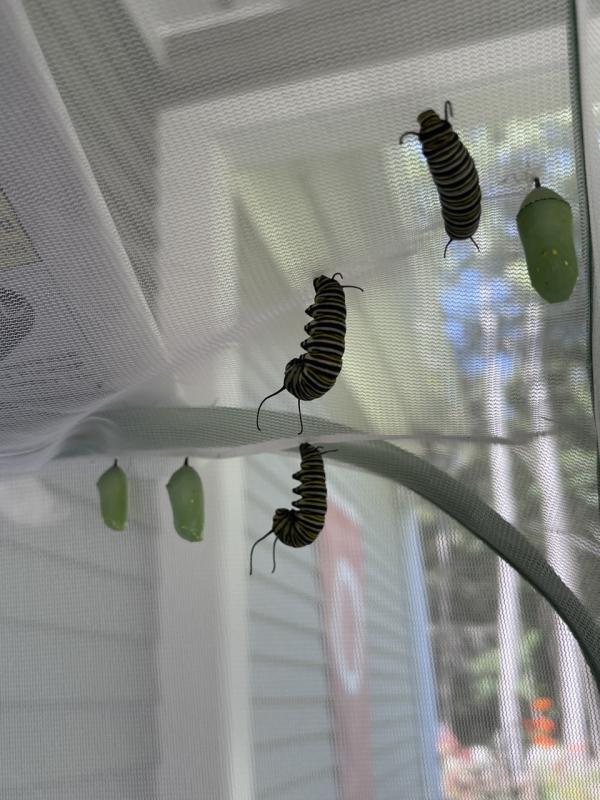 Caterpillars in j-position getting ready to transform. Sally Bullard photo
Caterpillars in j-position getting ready to transform. Sally Bullard photo
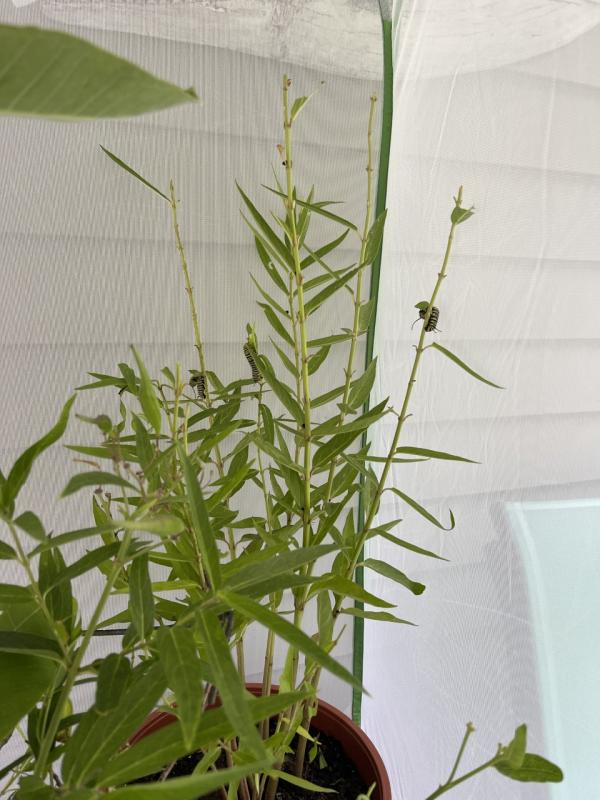 Caterpillars in the habitat with milkweed. Sally Bullard photo
Caterpillars in the habitat with milkweed. Sally Bullard photo
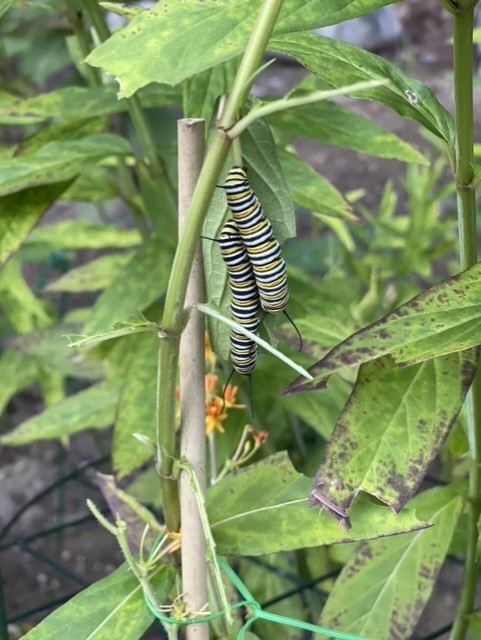 First caterpillars spied on milkweed. Sally Bullard photo
First caterpillars spied on milkweed. Sally Bullard photo
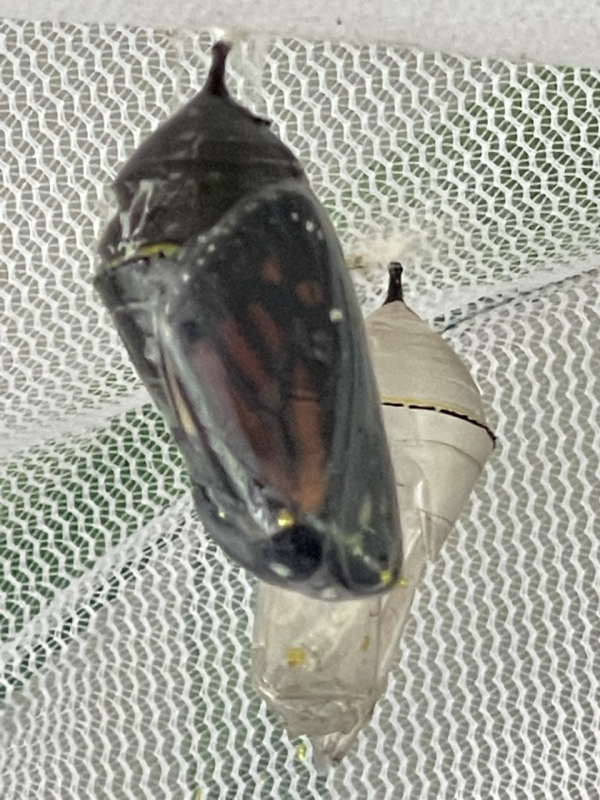 Getting ready, transformation imminent. Sally Bullard photo
Getting ready, transformation imminent. Sally Bullard photo
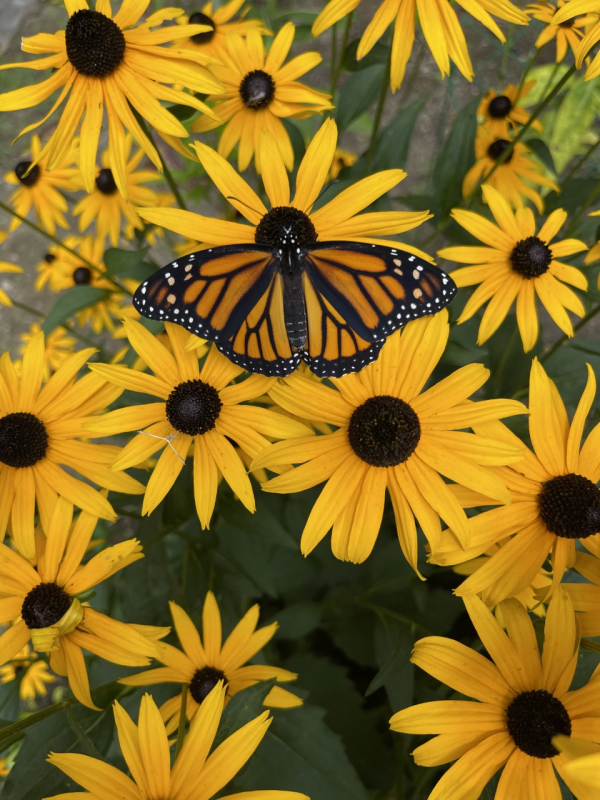 New monarch on rudbeckia – freedom! Sally Bullard photo
New monarch on rudbeckia – freedom! Sally Bullard photo
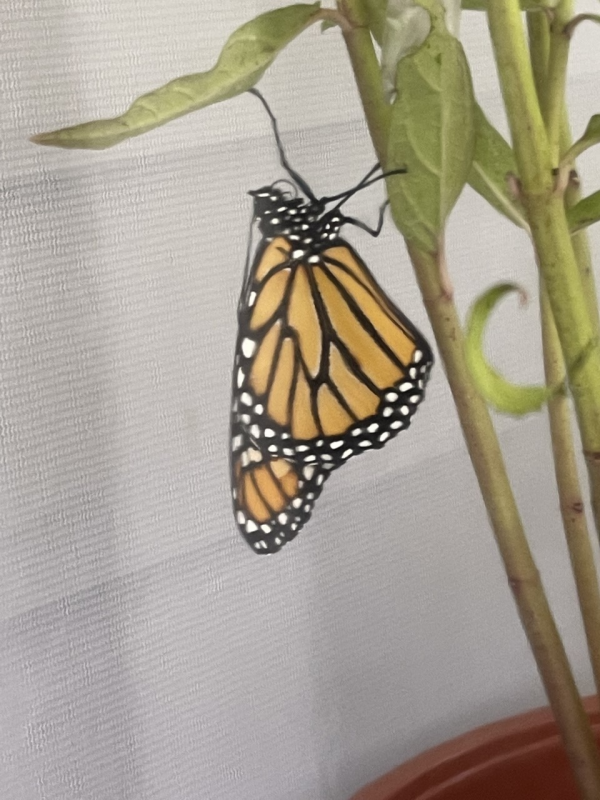 Drying wings one hour after birth. Sally Bullard photo
Drying wings one hour after birth. Sally Bullard photo
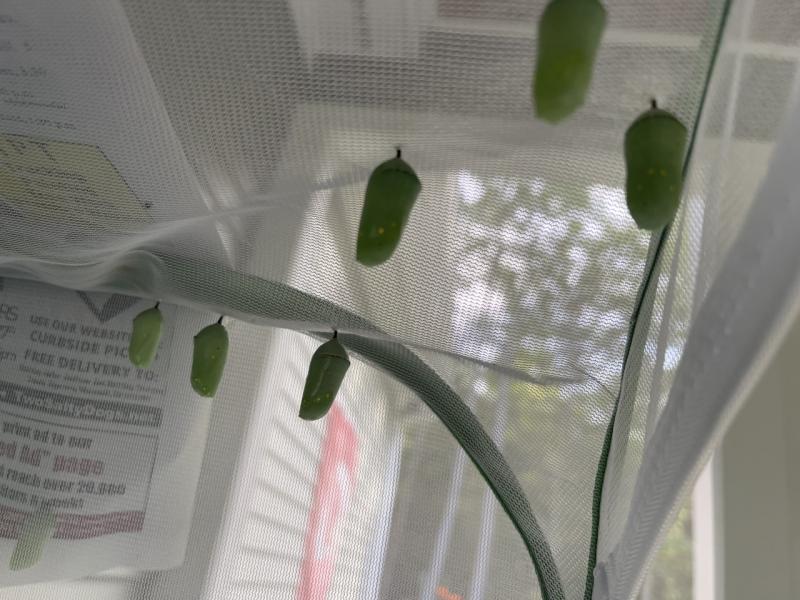 Six chrysalises. Sally Bullard photo
Six chrysalises. Sally Bullard photo
 Sally Bullard photo
Sally Bullard photo
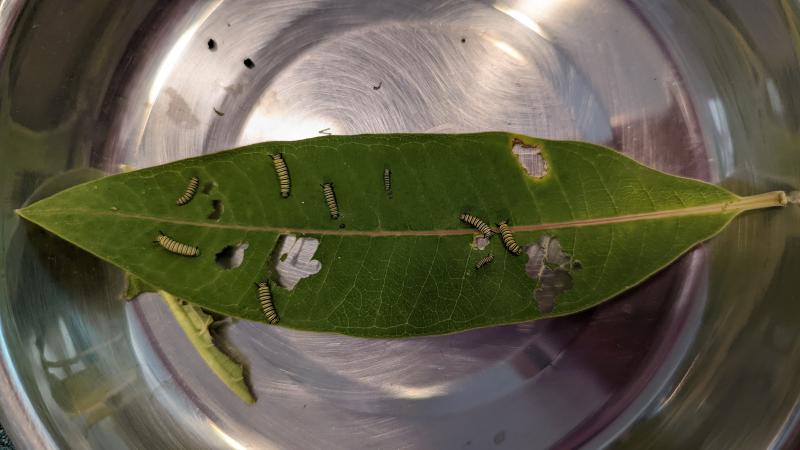 Wee caterpillars. Julie Roberts photo
Wee caterpillars. Julie Roberts photo
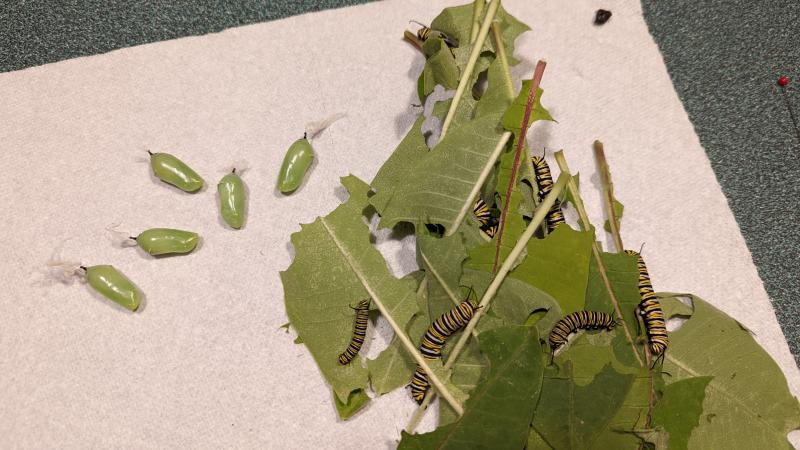 Caterpillars in different stages, some in chrysalis. Julie Roberts photo
Caterpillars in different stages, some in chrysalis. Julie Roberts photo
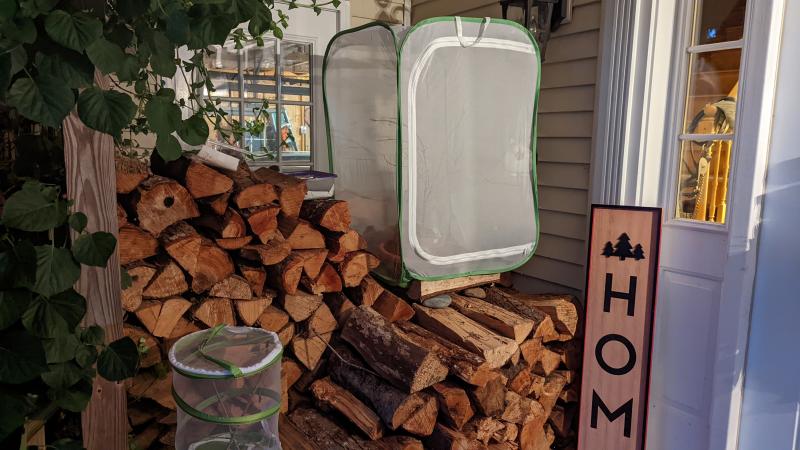 Butterfly habitats used. Julie Roberts photo
Butterfly habitats used. Julie Roberts photo
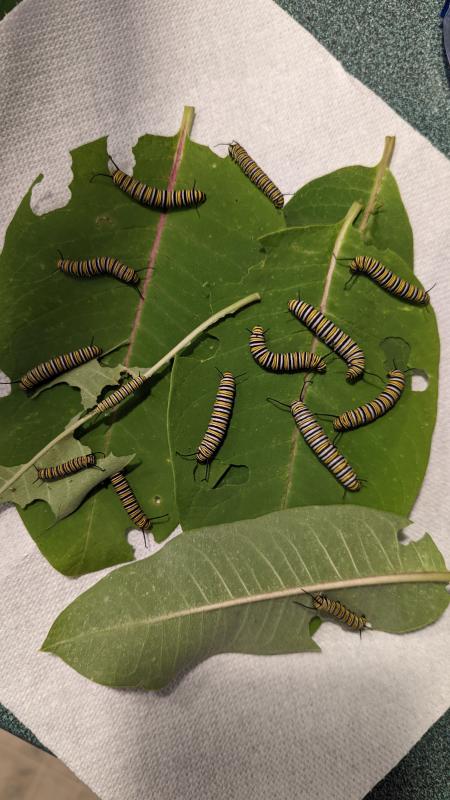 Feasting caterpillars. Julie Roberts photo
Feasting caterpillars. Julie Roberts photo
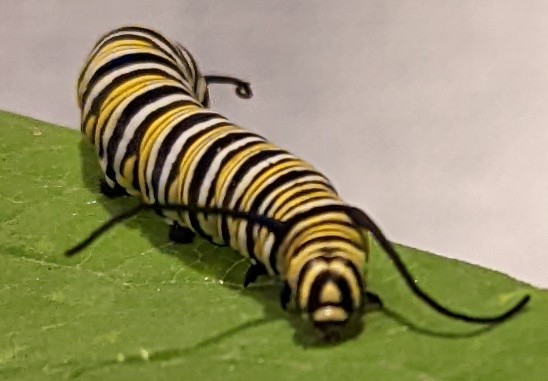 The caterpillar that will become a Monarch butterfly. Julie Roberts photo
The caterpillar that will become a Monarch butterfly. Julie Roberts photo
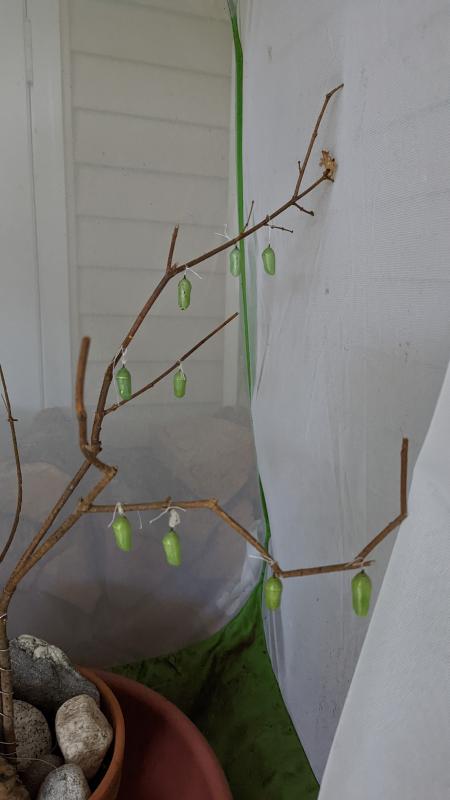 Chrysalises Julie Roberts hung with dental floss. Julie Roberts photo
Chrysalises Julie Roberts hung with dental floss. Julie Roberts photo
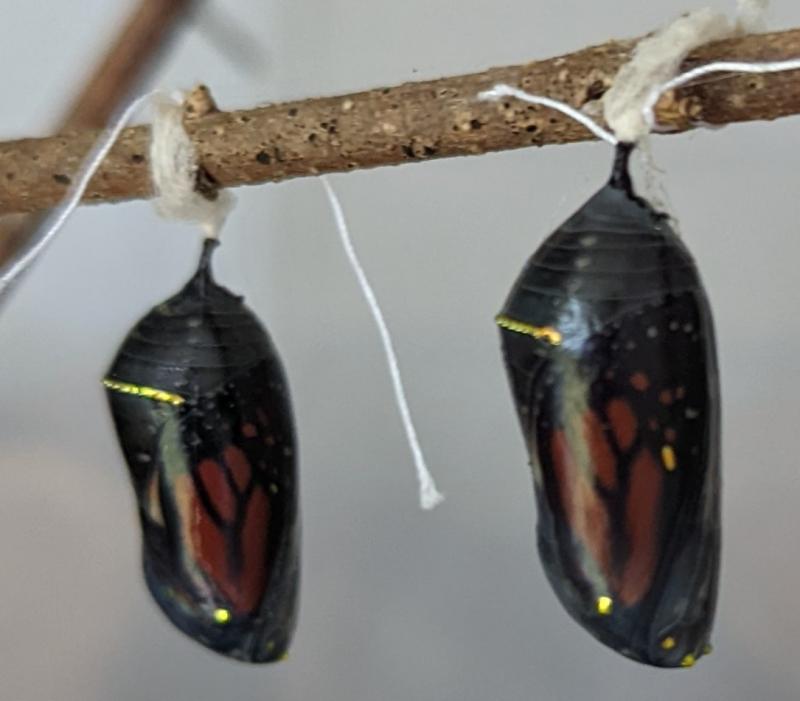 Almost ready to break free. Julie Roberts photo
Almost ready to break free. Julie Roberts photo
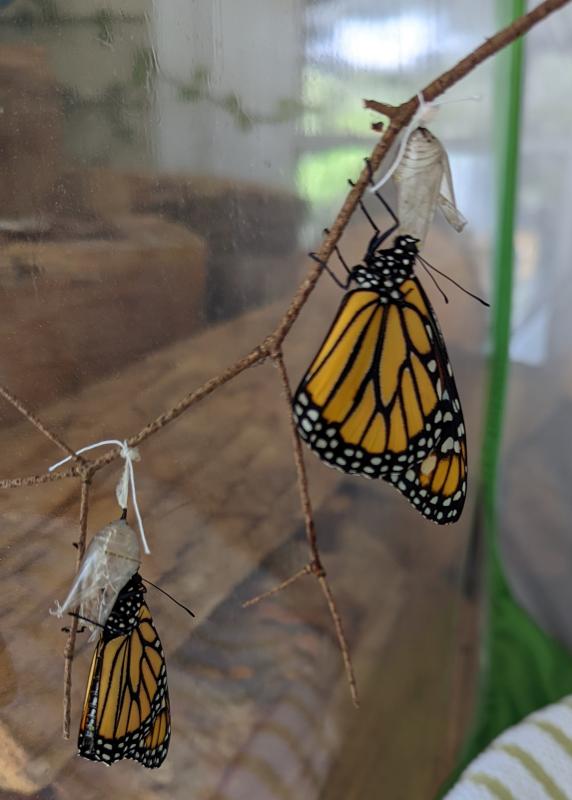 Julie Roberts photo
Julie Roberts photo
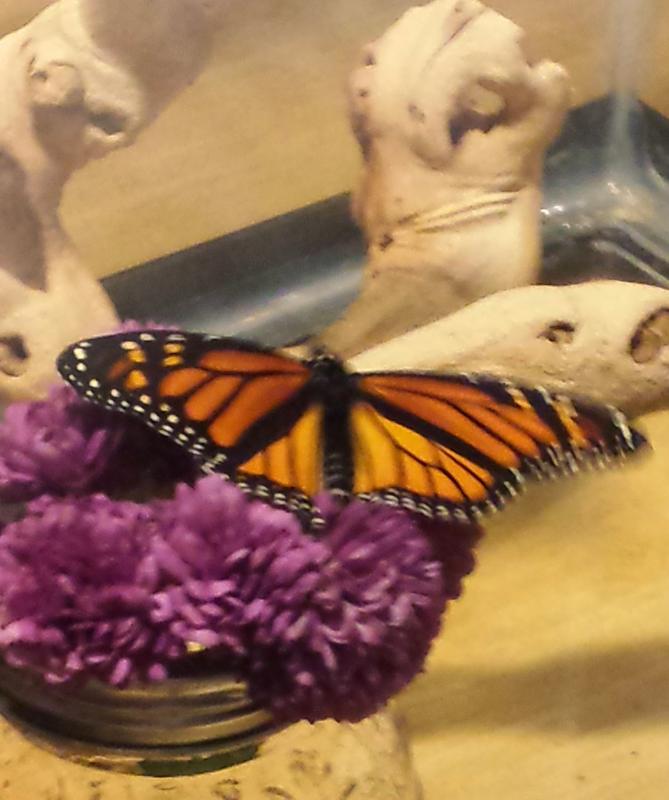 “Monday,” the Roberts family’s first monarch butterfly born three years ago was named by youngest daughter, Olivia. Guess what day the Monarch was born? Julie Roberts photo
“Monday,” the Roberts family’s first monarch butterfly born three years ago was named by youngest daughter, Olivia. Guess what day the Monarch was born? Julie Roberts photo
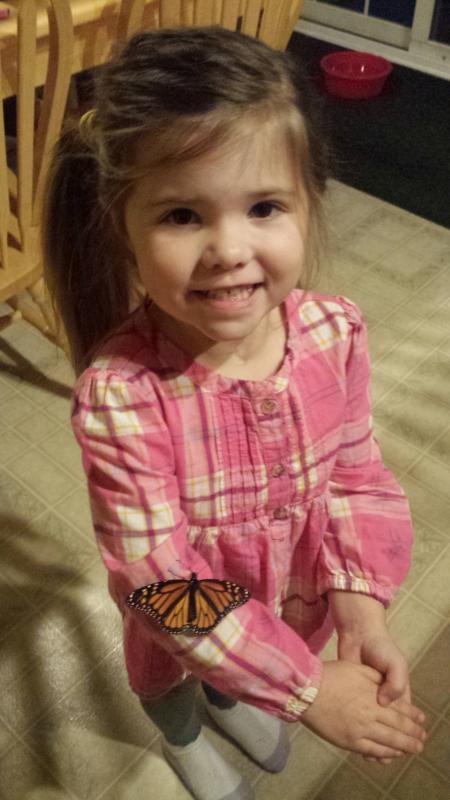 Olivia Roberts and Monday. Julie Roberts photo
Olivia Roberts and Monday. Julie Roberts photo
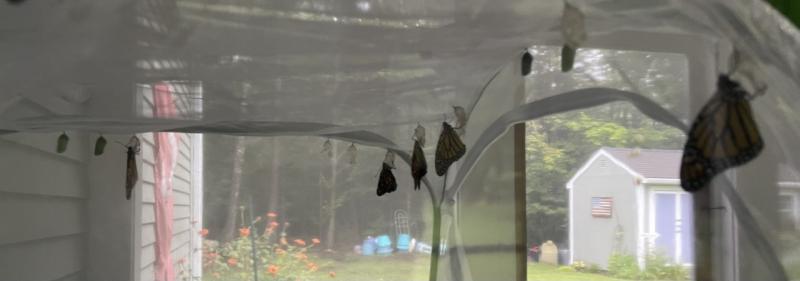 Four newborn monarchs dry their wings in the habitat in the screened-in porch. Sally Bullard photo
Four newborn monarchs dry their wings in the habitat in the screened-in porch. Sally Bullard photo
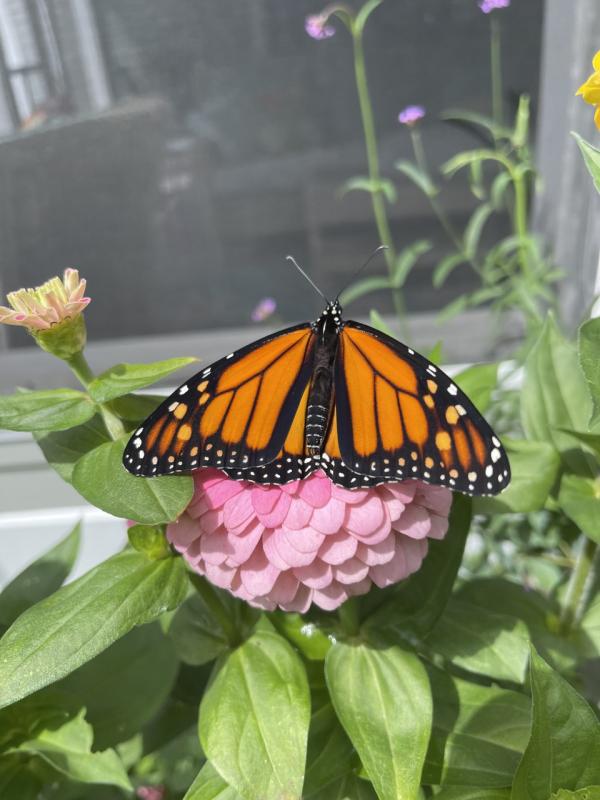 One of Sally Bullard’s female monarchs in the garden. Courtesy of Sally Bullard
One of Sally Bullard’s female monarchs in the garden. Courtesy of Sally Bullard
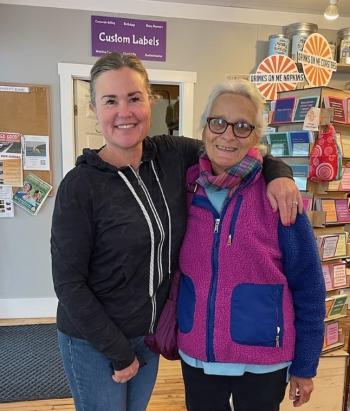 Monarch mamas Julie Roberts, left, and Sally Bullard. Courtesy of Julie Roberts
Monarch mamas Julie Roberts, left, and Sally Bullard. Courtesy of Julie Roberts
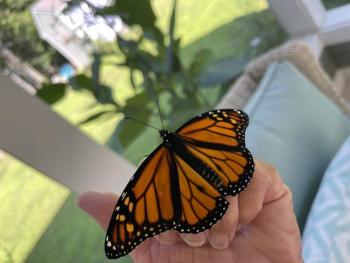 Male monarch born in Farmingdale under the care of Sally Bullard in 2022. Courtesy photo
Male monarch born in Farmingdale under the care of Sally Bullard in 2022. Courtesy photo
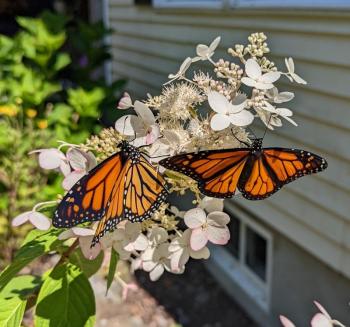 Baby monarchs freed into the yard of Julie and Paul Roberts and family. Julie Roberts photo
Baby monarchs freed into the yard of Julie and Paul Roberts and family. Julie Roberts photo
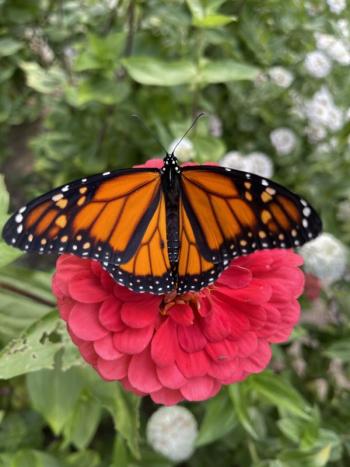 Sally Bullard photo
Sally Bullard photo
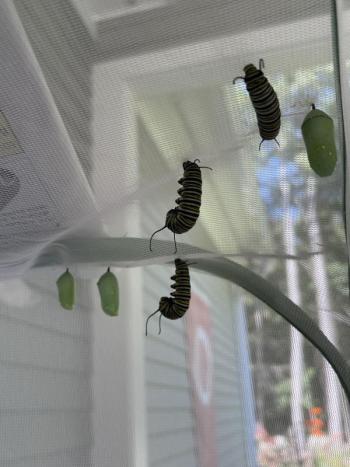 Caterpillars in j-position getting ready to transform. Sally Bullard photo
Caterpillars in j-position getting ready to transform. Sally Bullard photo
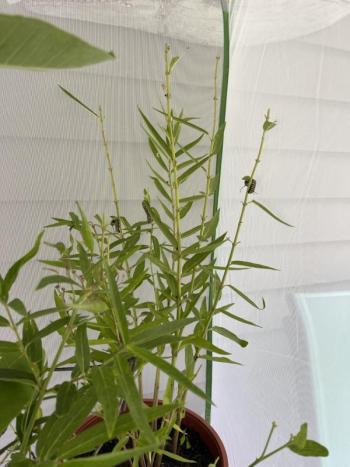 Caterpillars in the habitat with milkweed. Sally Bullard photo
Caterpillars in the habitat with milkweed. Sally Bullard photo
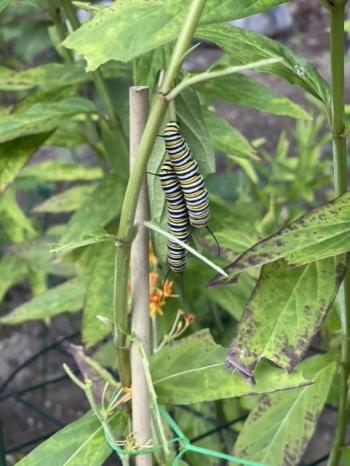 First caterpillars spied on milkweed. Sally Bullard photo
First caterpillars spied on milkweed. Sally Bullard photo
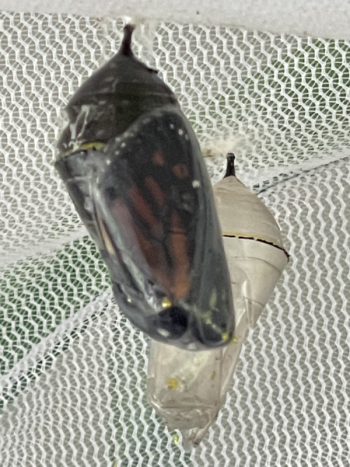 Getting ready, transformation imminent. Sally Bullard photo
Getting ready, transformation imminent. Sally Bullard photo
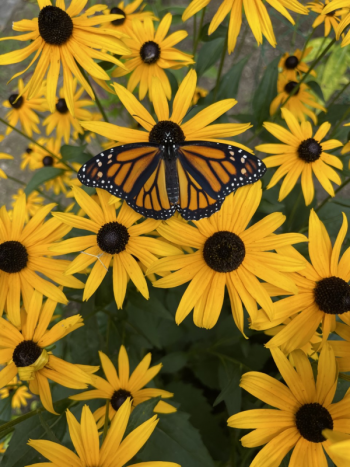 New monarch on rudbeckia – freedom! Sally Bullard photo
New monarch on rudbeckia – freedom! Sally Bullard photo
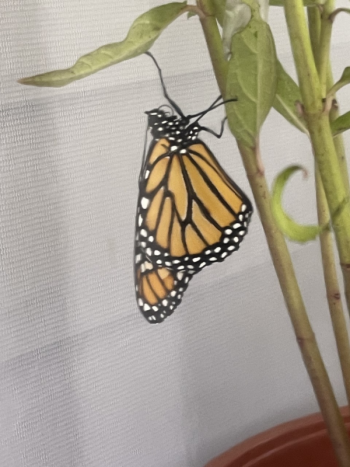 Drying wings one hour after birth. Sally Bullard photo
Drying wings one hour after birth. Sally Bullard photo
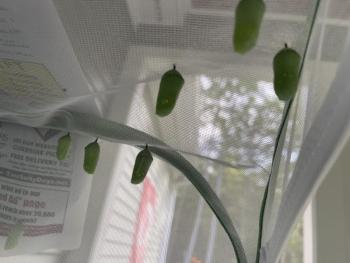 Six chrysalises. Sally Bullard photo
Six chrysalises. Sally Bullard photo
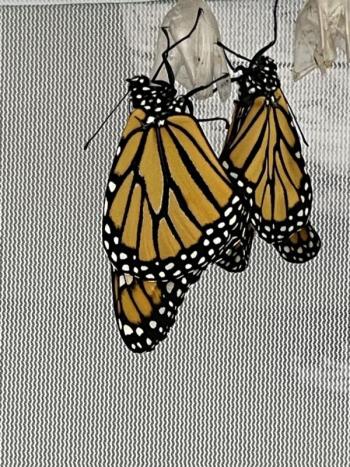 Sally Bullard photo
Sally Bullard photo
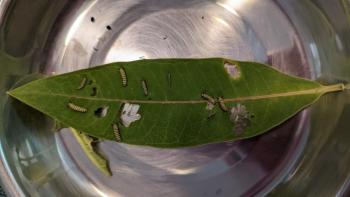 Wee caterpillars. Julie Roberts photo
Wee caterpillars. Julie Roberts photo
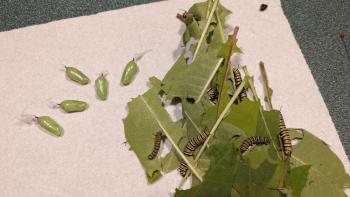 Caterpillars in different stages, some in chrysalis. Julie Roberts photo
Caterpillars in different stages, some in chrysalis. Julie Roberts photo
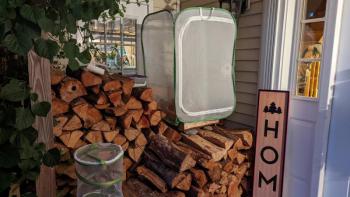 Butterfly habitats used. Julie Roberts photo
Butterfly habitats used. Julie Roberts photo
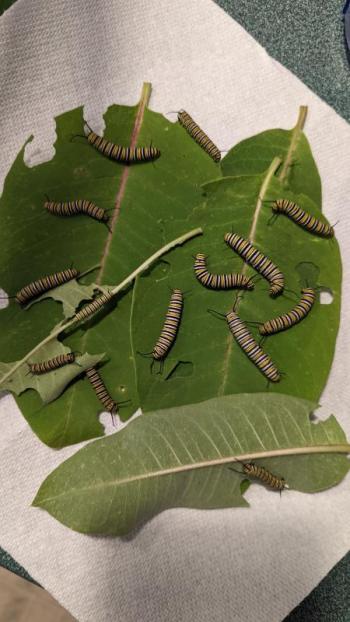 Feasting caterpillars. Julie Roberts photo
Feasting caterpillars. Julie Roberts photo
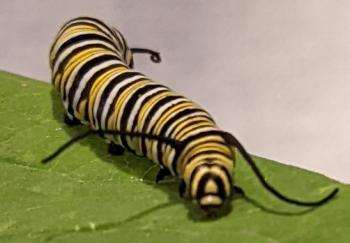 The caterpillar that will become a Monarch butterfly. Julie Roberts photo
The caterpillar that will become a Monarch butterfly. Julie Roberts photo
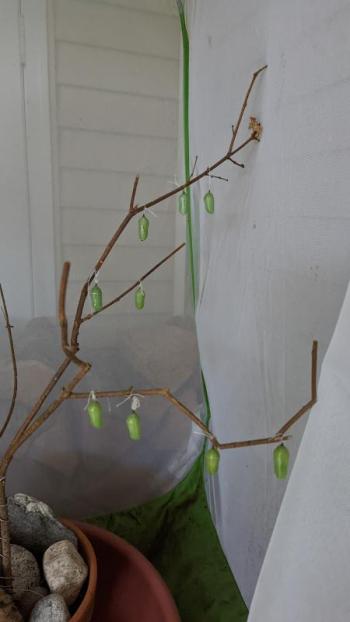 Chrysalises Julie Roberts hung with dental floss. Julie Roberts photo
Chrysalises Julie Roberts hung with dental floss. Julie Roberts photo
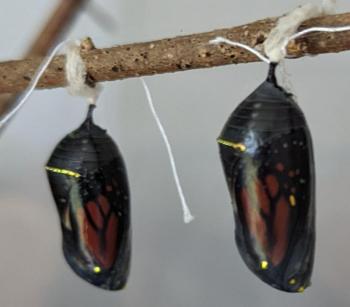 Almost ready to break free. Julie Roberts photo
Almost ready to break free. Julie Roberts photo
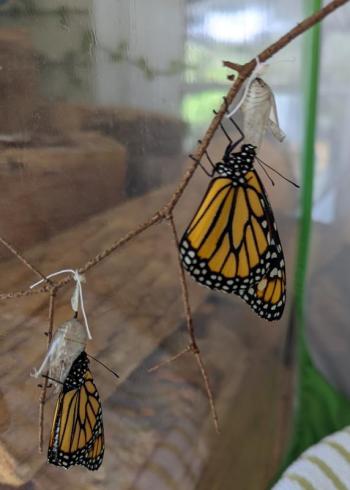 Julie Roberts photo
Julie Roberts photo
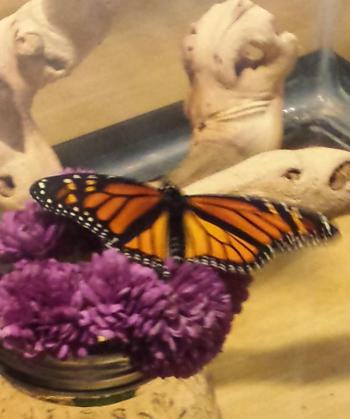 “Monday,” the Roberts family’s first monarch butterfly born three years ago was named by youngest daughter, Olivia. Guess what day the Monarch was born? Julie Roberts photo
“Monday,” the Roberts family’s first monarch butterfly born three years ago was named by youngest daughter, Olivia. Guess what day the Monarch was born? Julie Roberts photo
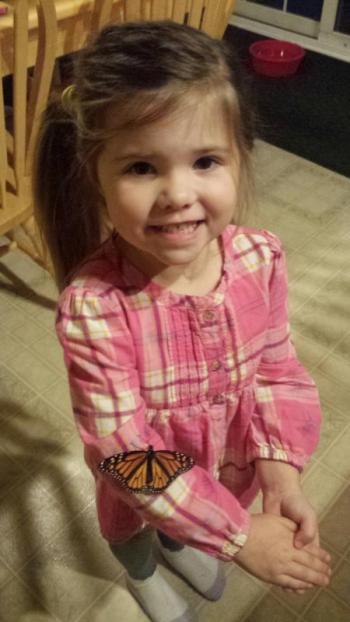 Olivia Roberts and Monday. Julie Roberts photo
Olivia Roberts and Monday. Julie Roberts photo
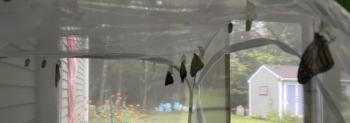 Four newborn monarchs dry their wings in the habitat in the screened-in porch. Sally Bullard photo
Four newborn monarchs dry their wings in the habitat in the screened-in porch. Sally Bullard photo
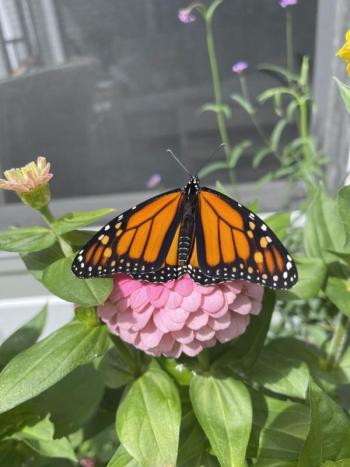 One of Sally Bullard’s female monarchs in the garden. Courtesy of Sally Bullard
One of Sally Bullard’s female monarchs in the garden. Courtesy of Sally Bullard
The migratory eastern monarch butterflies are en route to Mexico this time of year, but there aren’t as many making the journey to their winter home and mating place. According to World Wildlife Fund, over the past 30 years, the monarch population has fallen by a whopping 80%!
Herbicides are one reason: They kill milkweed, the only food for those large orange, black and white beauties. WWF also cited climate change, stating “… during the summers between 2004 and 2018 both the milkweed supply and the butterflies’ life cycle was affected.”
A 2018 National Geographic article noted increased carbon monoxide levels could be making milkweed too toxic for the monarchs and the higher temperatures could make it necessary for them to fly even further north to lay their eggs, making the current 3,000-mile journey to their winter home in the oyamel trees of Mexico even more arduous.
According to monarchjointventure.com, monarchs arrive in Mexico close to Day of the Dead observances on Nov. 1 and 2; the monarchs are still believed to be the souls of the ancestors and are the same color as cempazuchitl, or “flower of the dead.”
This year, the migratory eastern monarch was classified as endangered by the International Union for Conservation of Nature (IUCN), one of the organizations in the global fight to save species from extinction.
According to ecosystemgardening.com, to try to increase the number of monarchs, you can plant milkweed in the garden; it will multiply. And do not use herbicides or pesticides. Just ask Julie Roberts at Coastal Maine Popcorn Co. In 2019, Roberts planted four milkweed plants in her garden that is now about an 8’ x 8’ area; and no pesticides are ever used at Julie and Paul Roberts’ home. She invested in two butterfly habitats, 2-1/2 feet x 2 feet wide that she kept outside her front porch. A roof helps protect the habitats and the precious babies to come.
“I noticed the decrease in the number of monarchs around and my mom had started raising them a few years before I did,” she said. “And, years ago when Sally (Bullard) and I were neighbors she had monarchs growing wild ... and I may or may not have taken a few of them. I also may have had to steal milkweed leaves from her.”
Roberts noted that in 2020 she had no caterpillars at all and in 2021, just a couple.
In Farmingdale, Julie’s friend and former neighbor, Sally Bullard of A Maine Wedding, was equally concerned over how few monarchs were about. Bullard has been raising monarchs for the past three years.
“The first year there were a lot of caterpillars and they all turned into butterflies. The last few years have been very sparse,” Bullard said. “I think I found only a dozen last year. They’d get to 1-1/2” long and then disappear … turkeys and birds ate them maybe?”
This year, the two women decided to hold a friendly competition to see who could raise the most monarchs.
“I had no idea what to expect. A typical day was have your coffee and go out to the milkweed patch,” Roberts said. “This year I got up to 12-16 in one morning. It was just like Christmas!”
Bullard also invested in a large butterfly habitat and kept in her enclosed porch. “I’d take the leaves with the baby caterpillars on them from the garden and inside the habitat making sure to clean up their poop (it looks like a small rabbit’s). At one point I found 30 caterpillars over two to three weeks,” Bullard said, still elated at the memory. “I’d cut the leaves with the babies off the plant, bring it inside and then go out and cut more leaves off to feed them.”
Roberts would cut about a 2’ milkweed stalk and place it in a large bucket of water. “Each morning I’d check for wilted stalks, clean out the bucket,” she said. “You have to replenish the leaves every day.”
Both observed that at around 2-1/2” the caterpillars would crawl off the milkweed leaves and explore the sides of the habitat. They made their way to the ceiling to hang in the “j” position to form their chrysalis. The caterpillars attach themselves to the top of a tree branch in the habitat or to the wood framing at the top of the habitats by silk made from a spinneret on the bottom of their head.
“They would start contracting to slough off their caterpillar skin. Once the squirming stopped, the chrysalis was set,” said Bullard.
Once encased in their bright green chrysalis, 12 gold dots would appear around the top of each one, known as the diadem, as it hardened. Those gold shapes are cells that act as oxygen ports; the gold look is due to how the light reflects off them.
“About 10 days later the chrysalis begins to darken, and the day before birth you can actually see its wings – and birth happens in an instant!” said Bullard. “Once free from the chrysalis they hang upside down to dry their wings and as they dry the butterfly’s wings become bigger ...”
Once the butterflies began fluttering around, Bullard would offer one of her fingers for the monarch to alight onto travel to one of the flowers in her garden.
So, how did the monarch mamas do? Bullard raised 54 monarchs, mostly male; six were born in two days. Roberts raised 42 and most were female. How could they tell? Explained Bullard, “Male monarchs have a small black spot on the top of their hindwing,”
“It’s so exciting to see Mother Nature take her course,” said Bullard. “When they were fluttering around in the habitat it was time for them to go outside. I’d say ‘OK little buddy let’s put you on a flower,’” she said laughing. “It’s a simple pleasure that fills me with joy and hope.”
Bullard said Roberts went above and beyond with the care and feeding of her caterpillars. For example, Roberts recalled one caterpillar who was having a hard time trying to free itself from its skin. “I went in with two tweezers and gently held it while slowly pulling it off. I’ve also had to move a couple chrysalises and re-attach them with dental floss.”
“You talk about rebirth and transformation!” said Roberts. “It gives you hope to see a butterfly sailing off into the blue sky …”
Moose Crossing has a few varieties of milkweed every year. It’s where Roberts bought her plants. Pollination Station in Alna has milkweed seeds for $3 and has information about planting and monarchs. And The Caterpillar Lab at Coastal Maine Botanical Gardens is a resource.


